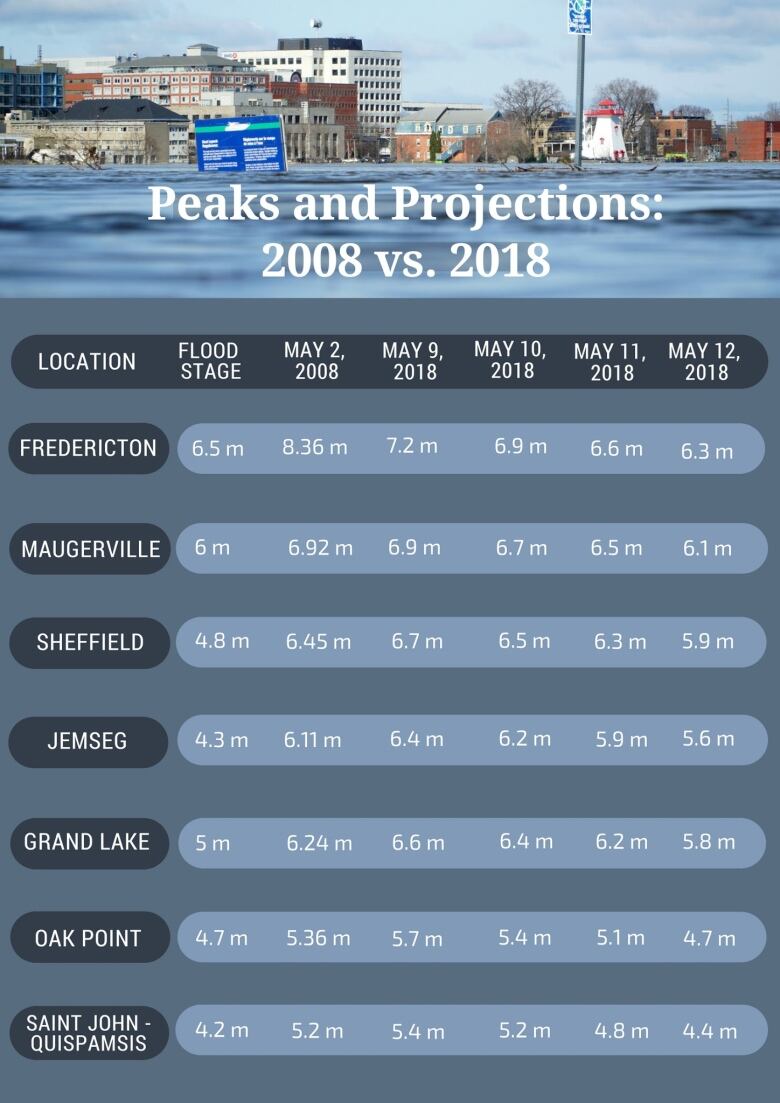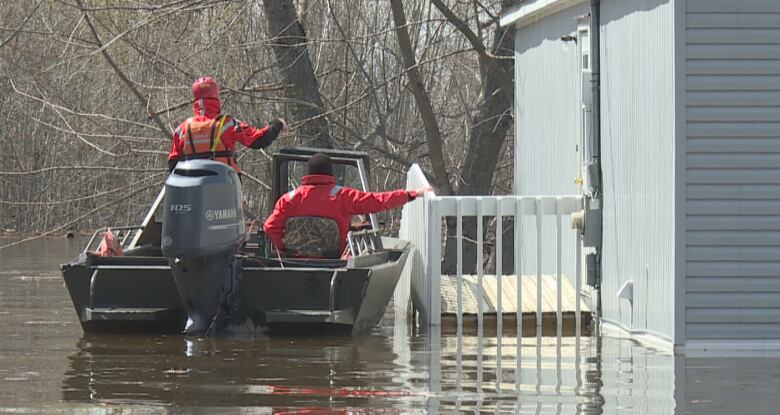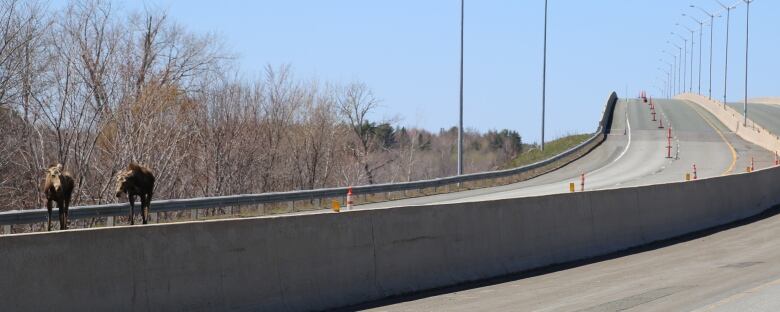'Threat is not over' despite receding New Brunswick floodwaters
The 1st lower basin communities could see water levels dip below flood stage by the weekend

Latest
- Water levels are dropping and will continue to recede in coming days
- Alert Ready test Wednesday evening unrelated to flooding
- Trans-Canada Highway between Fredericton and Moncton could partially reopen once debris is cleared
- EMO warns floodwater may be contaminated even floodwater is cleared
- EMO says it could be days or even weeks before residents can return home
Water levels dropped significantly overnight in parts of southern New Brunswick, and the forecast suggests that trend will continue this week.
"Good news, but the threat is not over, and it's not time to let anyone's guard down," said Greg MacCallum, director of the New Brunswick Emergency Measures Organization.
The unprecedented water levels that destroyed homes and displaced more than 1,100 residents will continue to remain above flood stage in the next 72 hours, according the province's River Watch forecast.
Jasmin Boisvert, a water science specialist with the province, said levels are forecast to "slowly" decline, barring a large rain event. However, it could be Saturday before the first communities between Fredericton and Saint John dip below flood level.

The Grand Lake area, one of the hardest hit communities, is expected to remain almost a metre above flood stage into the weekend.
"It's a slow process and will take time," Boisvert said.
- On mobile? Follow our live coverage here.

Evacuations still underway
Emergency officials saidit's still an emergency situation in some areas. Mike Carr, manager of the Saint John EMO, said Tuesday they were rescuing residents stranded in the isolated Randolph neighbourhood.
The water level peaked in Saint John on Monday evening, and the river is expected to drop by about 20 centimetres a day until the weekend.
As the water recedes, emergency officials across the province are cautioning residents against returning home, driving through closed roads or visiting once-flooded areas until the all-clear is given.
Officials say the worst of the flooding appears to be in the rearview mirror, but safety hazards are abound throughout the affected areas. Those hazards include structurally unsound buildings or roads and contaminated water.
We ask everyone to keep off the rivers. Recreational boating in these waters is dangerous. Currents are fast and strong, and the water is full of debris and is cold. pic.twitter.com/n7PZpk1xKr
—@NBEMO_OMUNB"We know evacuees' patience is being tested right now, but we're still asking them to not lose patience and certainly not to return home before it's safe to do so and they're told so by a competent authority," MacCallum said during a press conference Tuesday.
"Recovery, in every instance, is going to require a very deliberate, thoroughly planned and co-ordinated approach."
Alert Ready, national public alert system, is going to be tested Wednesday at 6:55 p.m. AT, MacCallum said. The system now includes wireless devices.
He said the test was programmed months ago and is unrelated to the flooding.
'End is in sight'
Parts of Fredericton have been under water nearing two weeks, and the capital city could see the swollen St. John River drop by about 1.7 metres between Monday and Friday.
"The end is in sight for Fredericton as far as flood levels go if the forecast holds up," said EMO spokesperson Geoffrey Downey.
"But then the hard work begins. There's a lot of recovery work that's going to need to be done, just because floodwaters are down doesn't mean everything returns to normal immediately."
A lot of infrastructure has been under water for at least 10 days, he said.
"Governments are going to have to have a long look at buildings and roads and see what damage has been done," he said.
"People will need a lot of helping hands to get their lives back up and running."

Two humanitarian groups, Samaritan's Purse and Team Rubicon, will be assisting in the co-ordinated clean-up effort, MacCallum said.
Displaced residents
The EMO director said health and safety inspection teams will be deployed around the province to assess damage and determine what repairs are required for residents to return home. He said teams are already working in northwestern New Brunswick, where floodwaters have receded.

As of Tuesday, 1,417 people from 610 households have registered with the Red Cross. Of that group, 230 people are staying in shelters at the University of New Brunswick's Fredericton and Saint John campuses.
MacCallum said Monday that's only part of the overall number of displaced New Brunswickers, estimating it could be between 2,000 to 3,000 people.
Trans-Canada closure
More than 150 provincial roads, bridges and culverts remain affected by flooding Tuesday, with about 85 closed or partially closed roads. That includesthe Trans-Canada Highway between Moncton and Fredericton.
The Department of Transportation and Infrastructure said there's significant debris buildup on the highway. Route 2 is expected to reopen with one lane in each direction, but no firm date is set.

Route 10 between Fredericton and Chipman remains closed.
There was also increased potential for forced electricity outages in some communities for safety and security reasons, officials said.
Contaminated water
Meanwhile, EMO officials continued to warn residents that floodwaters could be "heavily contaminated' with sewage and pose health risks.Many sewage systems have been compromised by the flooding.

"Water contaminated with sewage may contain bacteria, which can make people sick," Dr. Jennifer Russell, the province's chief medical officer of health, adding the greatest risk is drinking contaminated food or water.
"And the contamination can even come after you've touched it and it's on your hands. That's why it's really importantfor proper hygiene, to be washing your hands."
Russell said to not allow children and pets to play in floodwater areas until they've been cleaned up and the water has been cleared completely for a week. The sunlight and soil should destroy any excess bacteria, she said.















_(720p).jpg)


 OFFICIAL HD MUSIC VIDEO.jpg)
.jpg)



























































































